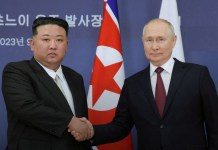Why the J-20 Fighter Jets of China pose a threat to countries like India, Japan and Vietnam? While the Indian Air Force reemphasised the need for Rafale fighter jets, meanwhile China has accomplished a breakthrough in its J-20 Fighter Jet programme by developing and fixing flaws in its own indigenous engine. With this development, China joins the elite list of nations to have developed its own jet engines.
- India Anxious, as Russia, China, Pakistan May Build Strategic Alliance?
- India Becomes Only 3rd Country to Develop “Drogue Light” for LCA Tejas
While China has developed a variety of indigenous fighter jet, the country has struggled to master the development of reliable engines that can match the US, French and Russian counterparts.
Earlier, Chinese engines had a reputation to have operating cycles serving only hundreds of hours before requiring complete overhaul compared with Western engines which could operate way beyond the Chinese engines.
Thus, a number of surviving aircraft of the Chinese Airforce use engines imported from Russia or developed in assistance with them. These fighter jets include the JF-17 fighter, which uses the RD-33 engine used on Russia’s MiG-29, and the J-10, which uses variants of the Russian AL-31 family.
The Indian defence establishment is familiar with both RD-33 and AL-31 engines, the former is used by the MiG-29s in service with the Indian Air Force and Navy, while the AL-31 powers the SU-30MKI fighter.
Even as the Indian Air Force reiterated the necessity of the Rafale fighter deal, China, on the other hand, has achieved a breakthrough in its J-20 stealth fighter programme by ironing out flaws in its indigenous engine.
This development could assist China to mass produce J-20 fighter jets without foreign assistance which could pose a direct threat to countries like India, Japan Vietnam besides the western block led by the US.




